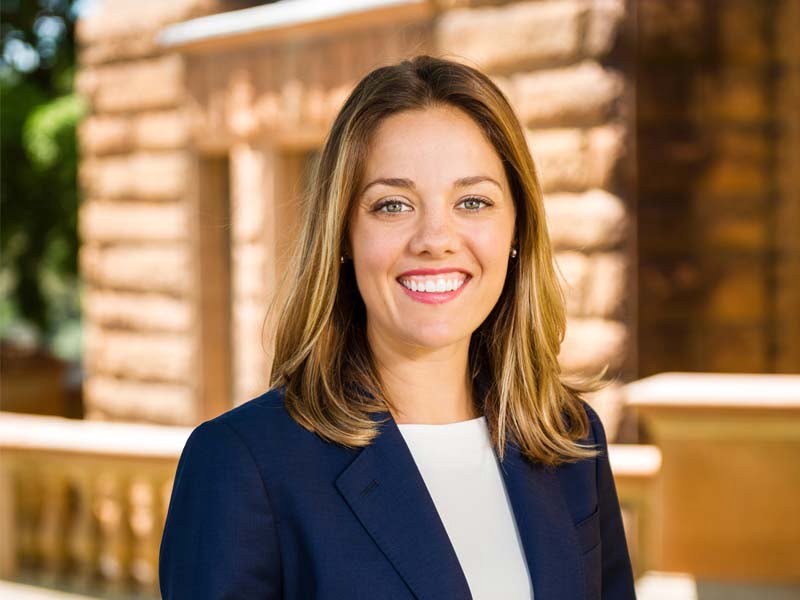There’s opportunity opening up for women in clean energy and blockchain financing, but low participation rates of women in corporate leadership and venture capital roles means there’s a long way to go until there’s a better world.
“When I think about women in leadership, some of the statistics are pretty shocking,” said Karen Lawson, chief executive officer at Slingshot which runs accelerator programs and helps connect startups to large corporates.
Ms Lawson, who was speaking at the InnovationAus.com Women in VC event on Tuesday, said there was a need to create inclusive high-tech incubators and accelerators and strategies to increase the participation of women and minority entrepreneurs.

“I am part of the 16 per cent of women who are CEOs. When we look at the percentage share that women get as founders or VCs around the world, we are looking at about 10 per cent.
“So we really are up against it in creating change and creating pathways to action to make sure that tomorrow is a better world,” said Ms Lawson, who had to create her Slingshot leadership role from scratch.
When Ms Lawson first came to Slingshot there wasn’t a CEO role, so she sat down with the founders to discuss the arrangement.
“I had really fallen in love with the business and I actually pitched to the founders, which is really an awkward conversation when you have to say ‘you guys are really good but I might be able to help you here’.”
The founders liked what Ms Lawson was presenting and gave here the gig.
“Sometimes you have to step forward and create your own opportunities” she said.
The number of female founders moving through the Slingshot system has increased dramatically in the last four years rising from none in 2013 to 10 per cent in 2014 and then 40 per cent in 2017.
Methods for boosting the number of women included improving outreach to women in the founder feeder systems and creating a learning environment where female founders felt safe.
Ms Lawson said her proudest moment came several weeks ago when Slingshot had finished making selections for its third health-tech accelerator.
“A female founder stood up and said that before the program had even started we had already connected her to a number of the female women’s health leaders that had come through previous programs.
“Already that network core had really helped her,” said Ms Lawson.
Meanwhile, the drive to cleaner energy sources with innovative distribution processes is creating major opportunities for women entrepreneurs and investors.
“Australia has this amazing confluence of events at the moment with high electricity prices and we also have some of the highest amounts of innovation in clean tech in the world,” said Katerina Kimmorley, associate director of the Clean Energy Finance Corporation’s Innovation Fund.
“Clean energy has a marginal cost of zero – it’s essentially free,” says Ms Kimmorley, who believes there’s a plethora of opportunity in the energy sector, especially for women entrepreneurs and investors.
“If you can have an energy source that is free and you can have an amazing amount of disruption it transforms everything.”
It will touch every sector in the economy,” Ms Kimmorley said.
Ms Kimmorley has serious clean energy form having been the founding executive director of Pollinate Energy, a social business that brings solar powered lights to families in slums in India.
“Its now the biggest provider of solar to slums in India – tell that to Adani,” said Ms Kimmorley.
Our energy distribution systems are set to become far more customer- centric, involve many new companies and there many opportunities for women in the mix.
“We will all be much more connected and much more distributed in our use of energy and the industries that will emerge from that will be quite different
“It’s going to be a very transforming space and I encourage women entrepreneurs and funders to have a look at it,” said Ms Kimmorley.
As for inspirational women in the clean energy arena, Ms Kimmorley cited Jemma Green, who is chair of WA clean energy sector startup Power Ledger, renewable energy trading platform that uses blockchain technology.
Power Ledger used disruptive in itself initial coin offering (ICO) to get funding, eventually raising $34 million from crypto currencies.
“I’m seeing more women in that disruptive funding space – we are at the forefront of that,” said Ms Kimmorley.
Do you know more? Contact James Riley via Email.

